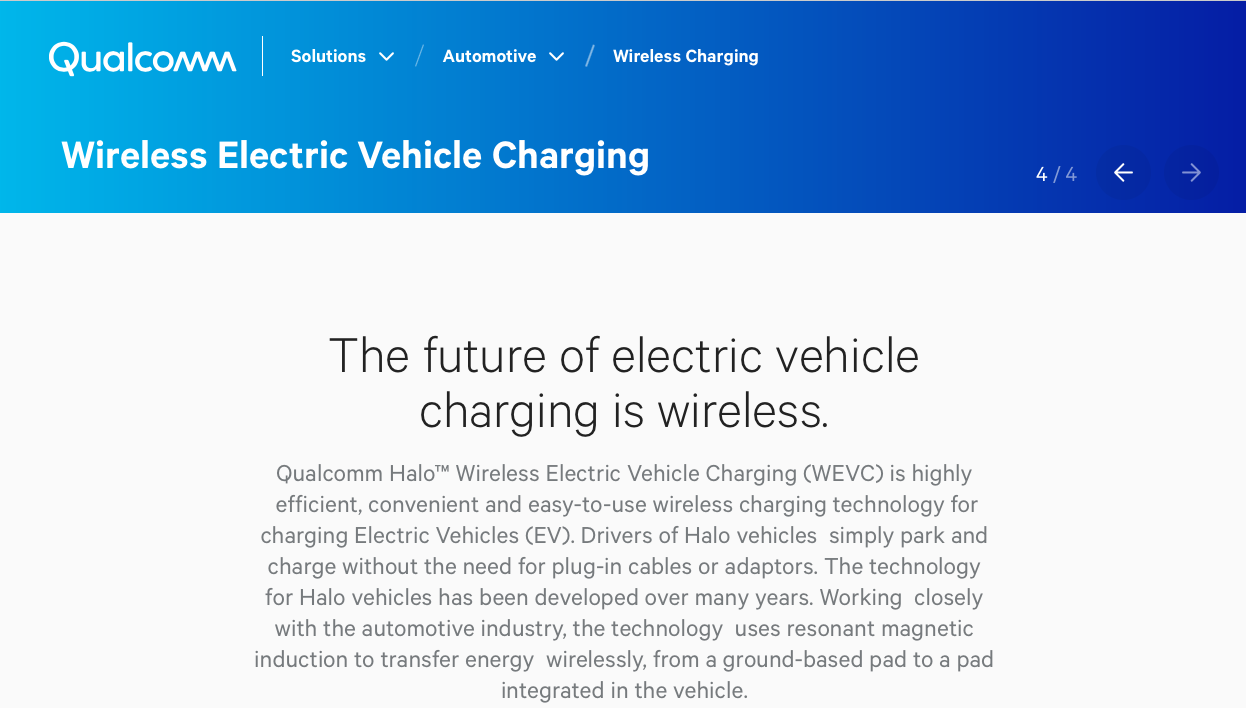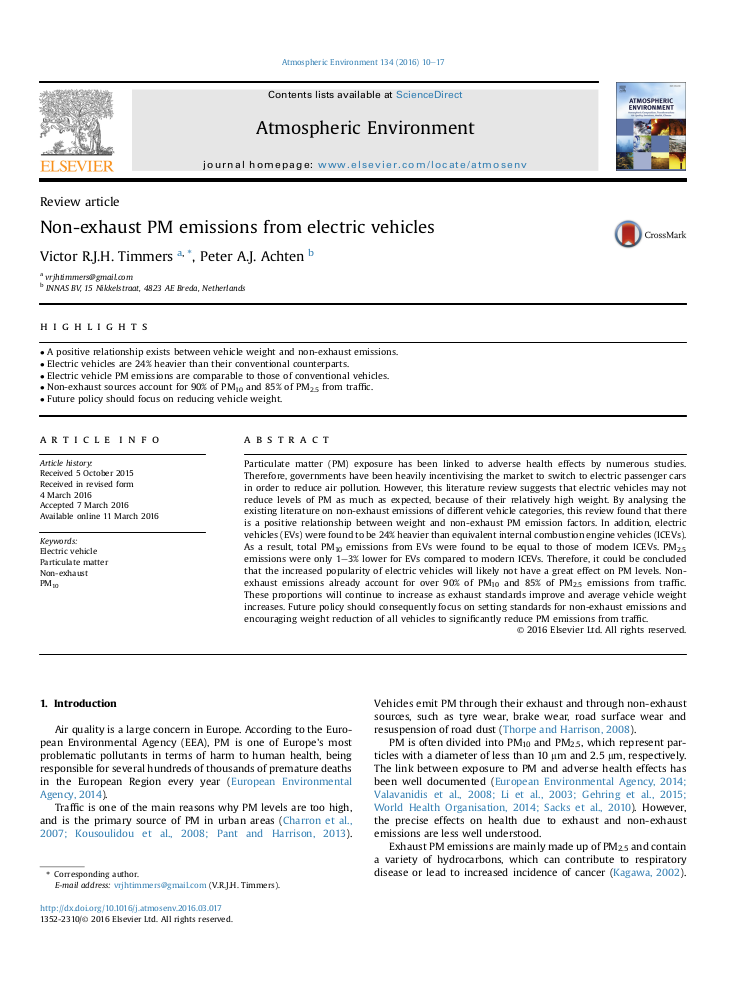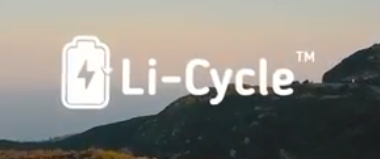Through our project we have identified how Electric Vehicles could progress in the future. However there is constantly new and interesting technologies and innovations which are extremely important too. Also provided are some recommendations for further study in this area which could improve our understanding of this complex issue.
Future Charging Technology
Currently there is a lot of research into new ways to charge an electric vehicle, some of which are outlined briefly below.
Wireless electric vehicle charging (1)
Termed ‘Halo’ Vehicles, resonant magnetic induction is used to wireless charge the vehicle from a pad on the ground to a pad at the bottom of the car.
Dynamic electric vehicle charging (1)
DEVC provides the ability to charge the car while driving. Current research technology is able to charge two vehicles on track at same time and can charge vehicles in both directions, and in reverse. An issue this technology faces is the square law as it is less effective the further it is.
Wireless electric vehicle charging (1)
Termed ‘Halo’ Vehicles, resonant magnetic induction is used to wireless charge the vehicle from a pad on the ground to a pad at the bottom of the car.
- 3.7kW, 7.4kW, , 11kW, 22kW
- Wireless power transfer efficiency of 90%+
Dynamic electric vehicle charging (1)
DEVC provides the ability to charge the car while driving. Current research technology is able to charge two vehicles on track at same time and can charge vehicles in both directions, and in reverse. An issue this technology faces is the square law as it is less effective the further it is.
- Capable of charging EV at up to 20kW at highway speeds (up to 100km)
- In participation Renault Kangoo Z.E.
Future Lithium Battery Recycling
There are only two existing companies that have the capability to recycle the large lithium ion batteries required for EVs—Retriev Technologies and Umicore (Retriev Technologies 2015; Umicore 2015)—and there are three different approaches to the recycling:
Tesla has stated that they are working closely with Umicore, and have stated they have been able to develop the first closed loop recycling process of batteries into completely reusable materials that has drastically reduced the carbon footprint of the manufacturing process.
There should be some concern for usage of rare earth elements in the batteries, as China owns approximately 95% of market production. This fruther highlights the importance of having companies in Europe and USA, such as Umicore and Li-Cycle that can recycle and re-use 100% of elements to become less dependant on other markets.
Less than 5% of spent lithium-ion batteries are recycled today. The currently best available technology cannot economically recover critical components like lithium.. As li-ion batteries continue to electrify our world, over 11 million tonnes of spent li-ion batteries will be discarded through to 2030. New start-up company Li-cycle is currently pending for new patented recycling technology that achieves 100% recovery of lithium from batteries that is
low energy, cheap and scalable. They plan to recycle up to 25,000 – 250,000 tonnes of lithium ion batteries by their final commercial phase.
- Hydrometallurgy
- Pyrometallurgy
- Direct physical recycling.
Tesla has stated that they are working closely with Umicore, and have stated they have been able to develop the first closed loop recycling process of batteries into completely reusable materials that has drastically reduced the carbon footprint of the manufacturing process.
There should be some concern for usage of rare earth elements in the batteries, as China owns approximately 95% of market production. This fruther highlights the importance of having companies in Europe and USA, such as Umicore and Li-Cycle that can recycle and re-use 100% of elements to become less dependant on other markets.
Less than 5% of spent lithium-ion batteries are recycled today. The currently best available technology cannot economically recover critical components like lithium.. As li-ion batteries continue to electrify our world, over 11 million tonnes of spent li-ion batteries will be discarded through to 2030. New start-up company Li-cycle is currently pending for new patented recycling technology that achieves 100% recovery of lithium from batteries that is
low energy, cheap and scalable. They plan to recycle up to 25,000 – 250,000 tonnes of lithium ion batteries by their final commercial phase.
Particulates
Recent studies have shown that electric vehicles are approximately 30% more heavier than their standard internal combustion engine counterpart. Heavier vehicles are also known to have greater rates of brake and tyre wear. This is due to heavier vehicles having more momentum when travelling at a given velocity, thus requires more stopping force which is provided by friction through both brakes and tyres. This is common misconception of EVs, that they are zero-emission, however this is not the case, as far greater numbers of particulates are released into the atmosphere through non-exhaust basis. This would indicate that this area could be further researched into the development of non-toxic tyres and brakes if an EV transition takes place.
Opportunities for Future Study
Through this project, we have been able to identify some areas where future study would be beneficial. Some examples are given below:
- A much more extensive study into how electric vehicle could progress with hybrids as well as including hybrid consideration into all the implication analysis.
- An analysis of where the extra supply could come from to match the demand from EVs and the precise requirements to ensure emissions reduction from tailpipe emissions is not offset by electricity generation emissions
- A more in depth study into possible lithium extraction in the UK and how this could potentially provide a more sustainable progression to EV
- A detailed look into current battery recycling as well as other battery options for EV
- A comprehensive and widespread look into all alternative technologies for each part of the Electric Vehicle in order to understand which technologies would provide the most sustainable progression.





